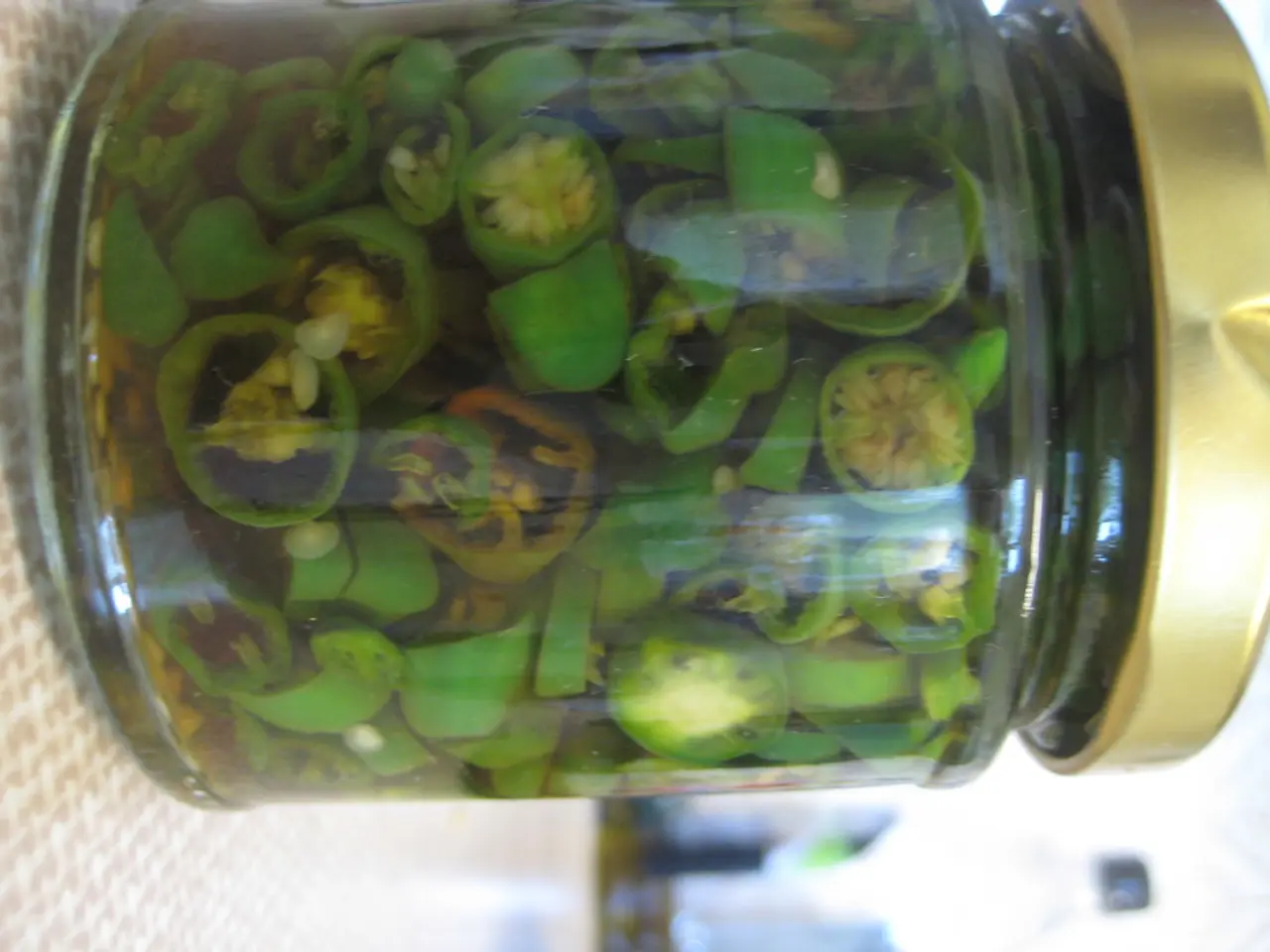Preservation Technique for Retaining Taste in Frozen Fruits and Vegetables
Freezing Fruits and Vegetables for Later Use: A Comprehensive Guide
In the heart of summer, when fresh produce is abundant, it's a great time to consider freezing some for later use. This simple guide will help you preserve the flavour, texture, and nutritional value of your fruits and vegetables, making it easier to enjoy summer's bounty all year round.
Fruits
Select fresh, ripe fruits that are free from bruises. Wash them under cold water, dry thoroughly, and remove stems, pits, and peel as needed. Fruits like peaches, nectarines, plums, and apricots require pitting and slicing, while berries can be frozen whole or halved.
To prevent pieces from sticking together, spread fruit pieces or whole small fruits on a parchment-lined baking tray in a single layer and freeze until solid (1–2 hours). Once frozen, transfer them to airtight, freezer-safe bags or containers, removing as much air as possible. Label with the date and type of fruit. Fruits maintain best quality up to about 6 months in the freezer.
Vegetables
Choose firm, fresh vegetables with good color. Many vegetables, especially those with higher water content (tomatoes, cucumbers, squash), may lose texture after freezing and are best used in cooked dishes or sauces. Most vegetables should be blanched (briefly boiled or steamed, then rapidly cooled) before freezing. This deactivates enzymes to preserve color, texture, and nutrients.
Prepare vegetables into usable sizes (whole, chopped, or sliced) before blanching and freezing. Similar to fruits, freeze chopped vegetables on a tray before bagging to prevent clumping. Use airtight containers or freezer bags, removing air before sealing. Vegetables can be frozen up to 12 months while maintaining quality.
Pureed Fruits and Vegetables
Purees are convenient for later use in smoothies, sauces, or baby food. Prepare fresh purees, portion them into freezer-safe containers or silicone trays for easy thawing, and label with the date and contents. Use purees within 3–6 months for best flavor and nutrients.
General Tips
- Keep your freezer at about –18°C (0°F) to ensure safe storage.
- Use quality, airtight packaging to prevent freezer burn.
- Label all packages with contents and freezing date.
- Avoid freezing overripe or damaged produce as freezing will not improve quality.
This method preserves flavor, texture (especially with flash freezing and blanching), nutritional value, and makes it easier to portion and use frozen fruits and vegetables effectively later.
Additional Tips
- Apples and pears freeze well only after they are pureed and cooked.
- If it's available in the freezer section at a supermarket, it can be safely frozen.
- If you're using bags, you can use a bag stand from Amazon to help hold them up as you make batches.
- Strawberries, tomatoes, butternut squash, yams, broccoli, and cauliflower are good candidates for freezing in pureed form.
In the gardening realm, summer’s abundance extends beyond the kitchen, offering an opportunity for organic planting of herbs, vegetables, and flowers in your home-and-garden. As harvest season approaches, consider preserving the harvest for later use in food-and-drink recipes by following gardening techniques.
Fresh herbs like basil, parsley, and cilantro can be chopped, cleaned, and air-dried, or frozen in olive oil or ice cube trays for convenient additions to dishes.
Vegetables, such as bell peppers, carrots, and green beans, can be washed, sliced, and flash frozen on a tray before transferring to freezer-safe bags or containers for later seasonings and cooking.
For a lovely, edible décor touch, freeze flowers like edible roses, violets, or calendula, finely crushed, to embellish sweet and savory dishes.
Recipes for using frozen produce in the winter months can be a fun and creative way to revisit the taste of summer throughout the changing seasons, promoting a healthy, sustainable lifestyle focused on food-and-drink.




